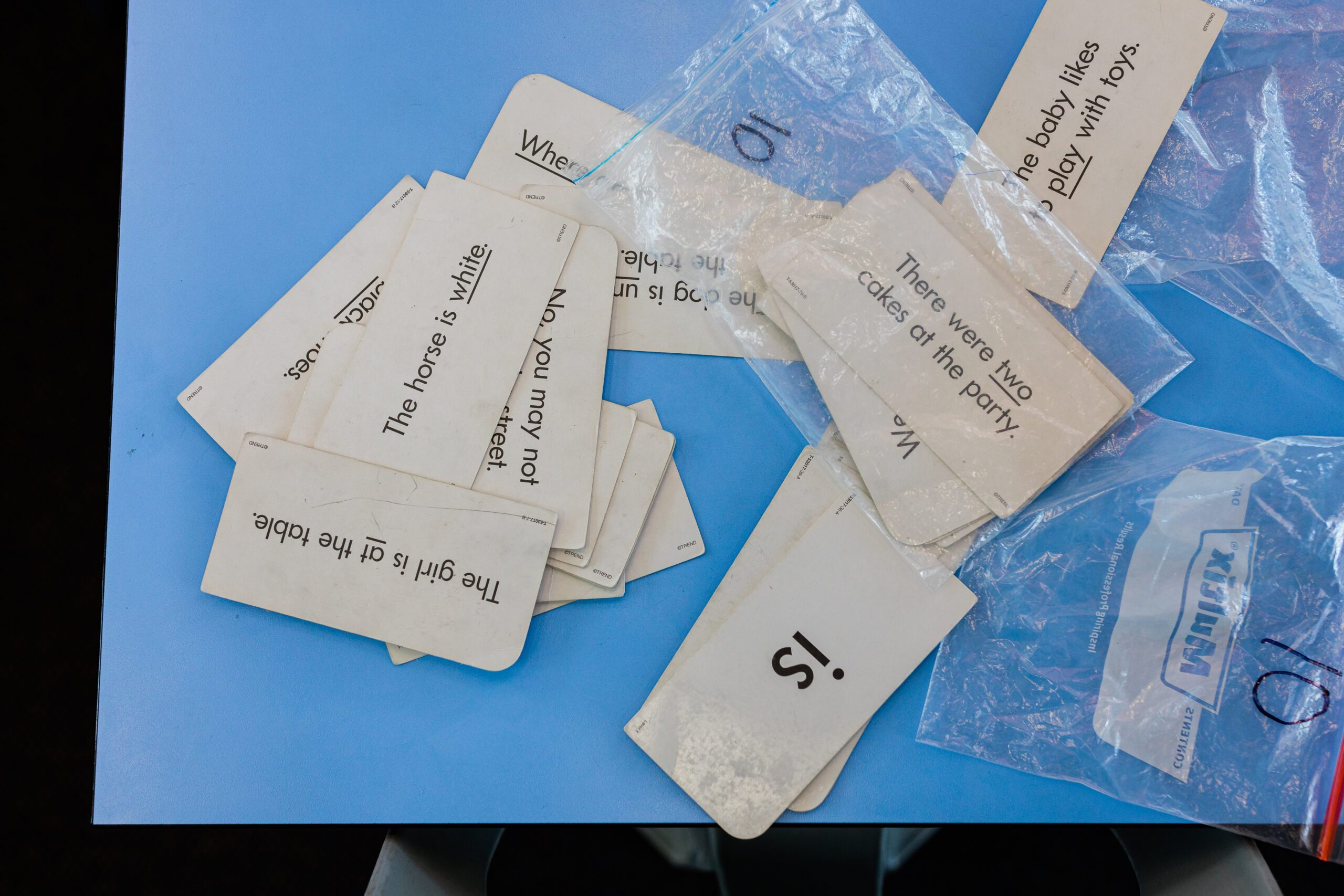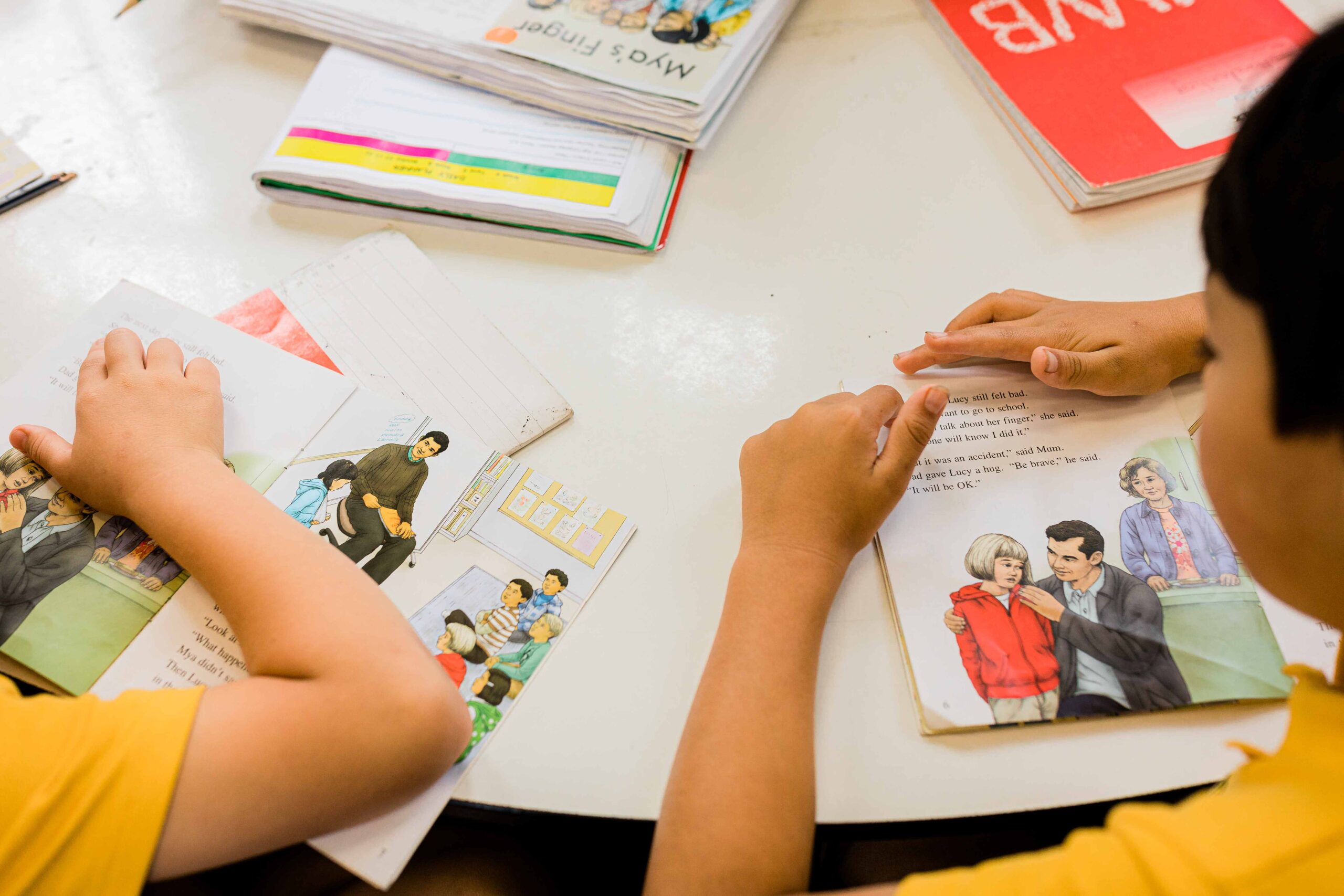Piripi Prendergast, Ending Streaming Project Lead at Tokona te Raki, hears stories about streaming all the time, most recently over a cup of tea at a tangi. During some polite conversation, he was asked about his job and got an immediate response.
“The woman looked up amazed and said, ‘that’s me’. She said she went to high school and did a test and was put in the ‘cabbage class’.” Imagine what it does to a kid, to be given the message from such a young age that you’re dumb, Prendergast asks.
While no teacher would intentionally call a student ‘dumb,’ their school or classroom practice of streaming or ability grouping often creates limiting frameworks on tamariki.
Dr David Pomeroy, senior lecturer from the University of Canterbury, has been researching and reading about streaming since 2013 and maintains it’s not the teacher’s fault. Teachers are taught to use streaming or ability grouping practices during their training and it’s used in classrooms with good intentions because they believe it meets the needs of their students.
Therefore, any streaming discussion with teachers needs to be mana affirming, he adds.
Streaming describes any form of continuous, fixed grouping based on perceived ability. At secondary level, this often looks like students separated into different classes. In primary schools, this usually appears as groups within classes, with students separated for different learning areas. Various strategies are used to position learners within these, but the nearer they are to the bottom, the less able they’re considered to be.
And whether you think of streaming as ‘ability grouping’ or ‘being called dumb,’ its effects are the same.
So when Prendergast asks us to imagine what it does to a kid, to be told at age six ‘you’re dumb,’ he’s being rhetorical. We know what it does.
Streaming harms young people. It impacts identity, achievement, sense of potential, social choices and social cohesion.
The University of Auckland’s Professor Christine Rubie-Davies has a special research interest in the effects of streaming on rangatahi.
“We have the second highest ability grouping rate of any OECD country and we have the highest disparity between our highest and lowest achievers. This is not rocket science!”
New Zealand schools are fond of streaming. According to PISA 2018, Aotearoa has the second highest incidence of streaming in the OECD, with an average 83.5% of students grouped by ability in schools compared to an average of 54% across other OECD countries.[2]
Pomeroy says all the evidence shows us that streaming is inequitable and detrimental.
“A large amount is well established. It’s from different reputable sources that tell a common story. It’s difficult to argue with.”
This evidence provides the basis for Kōkirihia: The plan for removing streaming from our schools released in March this year. Developed by Tokona te Raki – Māori Futures Collective in collaboration with the Ministry of Education and other sector groups, the plan is a call to action; a provocation, rationale and roadmap for ending the practice of streaming in Aotearoa by 2030.

Streaming is especially harmful for Māori and Pasifika
Streaming is a problem for all children and young people, but Māori and Pacific are particularly at risk.
It’s evident in the study He Awa Ara Rau – A Journey of many Paths published by Tokona te Raki in 2019. It tracked 79,674 rangatahi Māori aged 11 to 25 through their experiences of education and employment, and streaming was found to be one of the most significant barriers to success.
Manurewa West Primary School deputy principal Shea Bowden saw first-hand the harm streaming was doing to tamariki at her school. The school’s students, with a roll comprising 42% Māori, 38% Pasifika, 12% Indian and 8% other, were not achieving, particularly in maths.
“Streaming practices were limiting the lower grouping students to a set box to work in. I wanted to remove the stratifications so that all students could be exposed to the same range of vocabulary, language, ideas and thinking.”
In 2017, Bowden approached her principal with a call for change. “I’m really lucky to have a visionary school board and leadership who backed the idea, and we ended streaming in 2018,” she adds.
Shea says that before they ended streaming, 41% of their students were achieving at or above their level across the school in maths. Māori and Pasifika were performing the worst, with just 13% achieving.
“We de-streamed in 2018 and the results speak for themselves. 85% of our tamariki are on track to achieve or exceed benchmarks by the end of this year. This is up from 79% last year. Now, Māori are the group that achieve the best with 80-85% at or above where they are meant to be.”
Bowden admits that the transition wasn’t easy – it took two years for things to start changing. But, the results speak for themselves. “Our Māori kids approach things in the classroom completely differently now. They have this confidence of ‘I can do this, I am worthy of this’ and that changes everything.”
Professor Rubie-Davies’ research reflects Shea’s experience: “Kids are all very similar when they start school. But with perceived ability grouping, the gaps begin to widen to reveal disparities in learning outcomes over time.”
And because of the different learning opportunities offered, especially for students in lower groups, there tends to be very little movement once students are placed in these groups when they start school, explains Rubie-Davies. “The kids in lower groups feel a drop in belief and their motivation to achieve, which becomes a self-fulfilling prophecy,” she adds.
Professor Rubie-Davies says that when schools stream students from five years old, it sends them a clear message that they’ll be in that group for life. She adds that this remains ingrained in the school system, even though we know children learn at different speeds at different times.
“Teachers need to ask themselves, ‘do we really want to be responsible for judging a child, essentially deciding a child’s future, based on perceived ability at such a young age’? Schools that have ended streaming have decided that they are not ok with that.”
Lynda Broadbent is a new entrant Year One teacher and DMIC mentor at Corinna School. She found that even if teachers gave the groups different names, or different colours, students will always know where they sit in the pecking order. “They see this and pick up the narrative about who’s smart and who’s dumb, and it damages them,” she explains. “All children need the chance to bring their gold.”

Streaming reinforces existing inequalities
Kōkirihia reveals the whakapapa of streaming, which has roots in colonial ideas about the ‘inherent traits’ of different demographics. This also includes the notion that different learning experiences suit some groups more than others. The report shares, for example, the idea that Māori were kinesthetic learners, ‘good at music, sport and dance,’ and therefore, ‘not good with their minds’. Aotearoa’s education system was set up in a way that deliberately sought to create inequities of access to opportunities for certain groups.
Prendergast says these inequities of access are still deeply embedded in Aotearoa schools: “You only have to look at the ethnic composition of the classes to see who’s represented in each stream; usually Pākeha at the top groups and classes, and Māori and other ethnic minorities in the bottom.”
Rubie-Davies maintains that at its most basic, streaming ensures that the current social strata are maintained.
“Part of the reason for some of the resistance in ending streaming, is because it will help break down the current regime, enabling those currently disempowered communities to succeed,” she explains.
“De-streaming is breaking down the social strata; it’s the whanaungatanga model where everybody has a chance to do well, for the betterment of us all.
“Rangatahi Māori have told me that teachers have reassured them that ‘achieved’ is fine, but the child has replied ‘I don’t want to get just achieved’. The teacher is well-meaning, without a doubt, but they are subconsciously reinforcing a bias that Māori have been told since the beginning.”
“Schools, by continuing ability groupings, are not meeting their obligations under Section 127 of the Education and Training Act, 2020,” says Pomeroy. “This includes the expectation to ensure all students are able to achieve their best in education, and schools be inclusive and cater for students with different needs,” he adds.
Culturally situated learning – honouring Te Tiriti in education
Hand in hand with de-streaming, European-centric pedagogy can have a significant impact on students’ ability to succeed. Rubie-Davies’ research concluded that schools in Aotearoa still teach and test using cultural contexts that are alien to many of the students in schools.
Bowden has seen the massive difference this makes in the classroom. “Using the richness of culture, children have their own to say and show what they know. When the topics are relevant, children can engage in talk that’s reciprocal and share knowledge. It maintains their mana,” she adds.
Bowden re-writes the PAT tests at Manurewa West Primary so that they are reflective of the cultures and communities the school’s kids come from. She says it has been a game-changer. “When our kids were sitting the standard tests, they couldn’t relate to them as they used Eurocentric examples and contexts, and the kids lost interest.” Bowden found that her students were far more responsive to culturally informed tests.
Broadbent agrees and adds: “As teachers we need to remember that while some kids don’t know the alphabet, they’ll know the whole story. We need to work with their strengths.”
Rubie-Davies adds that in addition to Euro-centric curricula, many schools still use Western models of learning based on individual outcomes. “Māori and Pasifika tamariki come from cultures where learning is collective, success is shared and things are done together.”

Streaming does not benefit those in high ability groups either
Streaming can also have a negative impact on learners placed in high ability groups through high expectations, fast pace of lessons, and pressure to succeed. Learners in these groups can have lower academic self-concept than expected based on their achievement.
“There can only ever be three kids placed first or second or third, and if you’re used to being one of them and don’t make it, this can have major effects,” says Rubie-Davies. Her research found that the achievement rates of the students in these groups often dropped – because when they didn’t place as highly in tests, their self-belief would drop, and so does their motivation to achieve.
Pomeroy says the evidence suggests children in these groups have increased rates of anxiety compared to those in other levels. He maintains that any perceived benefits to children in higher ability groups are overstated.
Bowden says de-streaming has been hugely beneficial to rangatahi who would previously have been placed in top groups. The students become teachers to their peers – such as demonstrating ways to solve maths problems to others. They learn by being able to deepen their understanding of topics, find different ways of solving things and critically assess their ideas.
“I’ve had a lot of push-back from parents about this: ‘my [bright] kid is being disadvantaged by showing others how to do the work,’ but the reality could not be more different, explains Bowden. “The highest academic attainment you can get is a Ph.D., right? What do candidates need to do to prove they truly understand the topic of their thesis? They do an oral exam – explaining to others their mastery of the subject. It’s only by passing this that they get their Ph.D.”
The way forward
Despite overwhelming evidence that streaming practices are harmful, they remain stubbornly embedded in our schools. In 2022, NZEI Te Riu Roa and the PPTA in conjunction with the University of Canterbury and the University of Auckland undertook a survey of Aotearoa teachers and leaders which found that 69% of primary teachers reported using at least some form of streaming.
Pomeroy maintains that it’s not the teacher’s fault because they learn it at training college and use it with good intentions because they think it’s meeting the needs of their students. Therefore, any streaming discussion with teachers needs to be mana affirming, he adds.
Bowden says schools are currently left to figure out the de-streaming transition for themselves and calls for the Ministry of Education to provide more resources and professional development to support schools in this change.
To close, David issues a wero.





